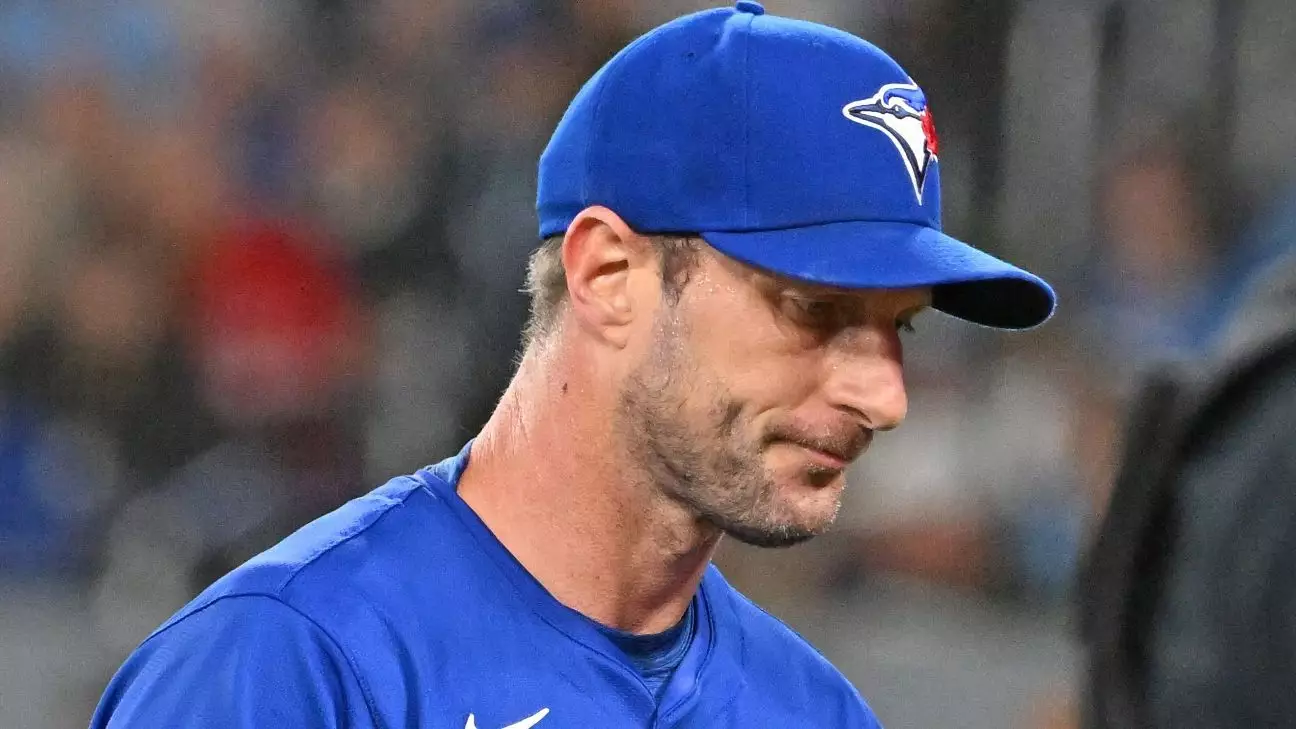In the world of professional sports, injuries are an inescapable reality that even the most veteran athletes must confront. For Max Scherzer, the renowned right-handed pitcher for the Toronto Blue Jays, this ongoing struggle has become a notable chapter in his illustrious career. As one of the most decorated pitchers in MLB history, Scherzer finds himself wrestling not just with the physical demands of the game but also with the psychological weight of injury management. As he grapples with persistent soreness in his right thumb, fans and analysts alike are left to wonder how this might affect his performance this season and the team’s prospects overall.
The Impact of Injury on Performance
Scherzer’s journey with injury has been tumultuous. After signing a lucrative one-year contract valued at $15.5 million with the Blue Jays, expectations soared. However, his recent experiences raise concerns. On March 29, during his debut start, a combination of thumb soreness and a prior lat muscle issue forced him out of the game prematurely. This isn’t just a matter of physical pain; such early exits can disrupt a player’s rhythm and mental focus. When athletes like Scherzer suffer injuries, it creates a ripple effect; not only does it sideline them, but it can also affect team morale and strategies.
The decision to put Scherzer on the injured list due to right thumb inflammation signals a crucial turning point. It reflects a need for cautious recovery — a fact echoed by Blue Jays manager John Schneider, who emphasizes that the priority is to ensure Scherzer’s long-term health rather than a rushed return. Still, for a player of Scherzer’s caliber, the prospect of prolonged absence poses questions about timing, training, and the potential for setbacks.
Navigating Recovery with Expert Guidance
Notably, Scherzer continues to seek clarity through consultations with medical specialists, recently opting for a second opinion later this week. This is a prudent approach, considering his history of injuries that have included lower back surgery, shoulder fatigue, and a hamstring strain. The cortisone injection he received earlier in March was intended to alleviate his thumb issue, yet it seemingly offers only temporary relief. Such circumstances highlight a critical aspect of athlete care: recovery is rarely linear.
Despite the wear and tear that typically accompanies a player who has logged significant innings over his career, Scherzer’s extraordinary work ethic remains evident. Reports indicate that he has been persistent about throwing and maintaining conditioning during this period of recovery. Yet, it raises another question: how does an athlete balance the urge to push through discomfort with the necessity of proper healing?
Looking Ahead: The Psychological Component of Injury
The psychological strain of injury can often be as daunting as the physical aspects. Athletes like Scherzer invest their identity and self-worth in their performance. Therefore, the uncertainty of recovery can lead to frustration and anxiety. When a seasoned player must confront the fact that an injury could redefine not only their season but also their legacy, the stakes become personal and profound.
Thus, it is crucial for Scherzer and the Blue Jays’ management to navigate this situation with care, weighing the immediate demands of competition against the long-term implications for a player whose remarkable skills still have a place in the league spotlight. Ultimately, the journey of resilience that Scherzer is undergoing serves as a reminder of the relentless nature of sports — where success is not only measured in wins and losses but in the tenacity to rise and adapt in the face of adversity.

